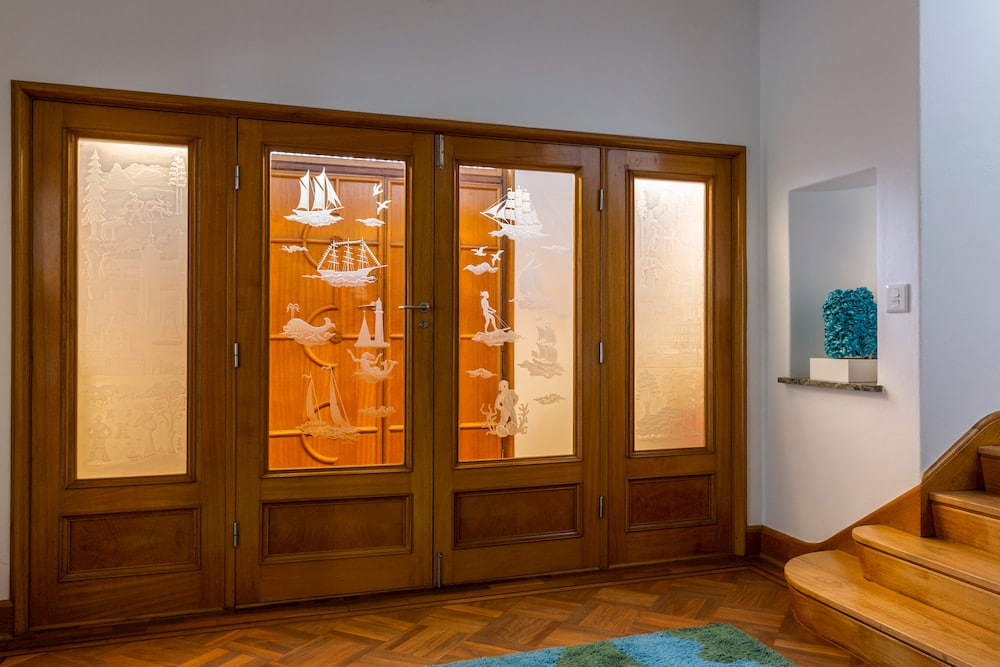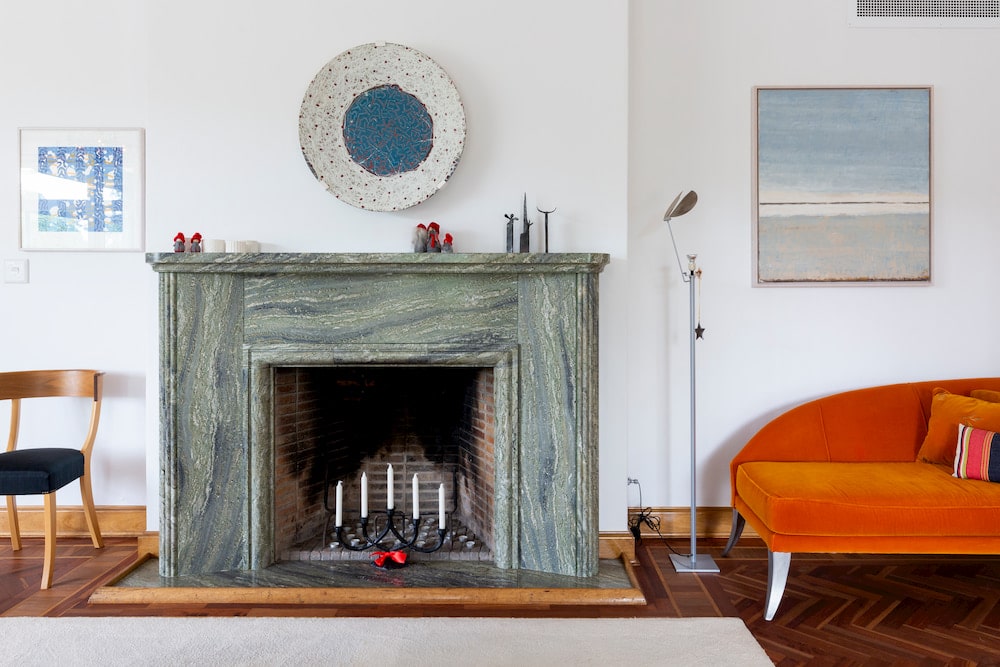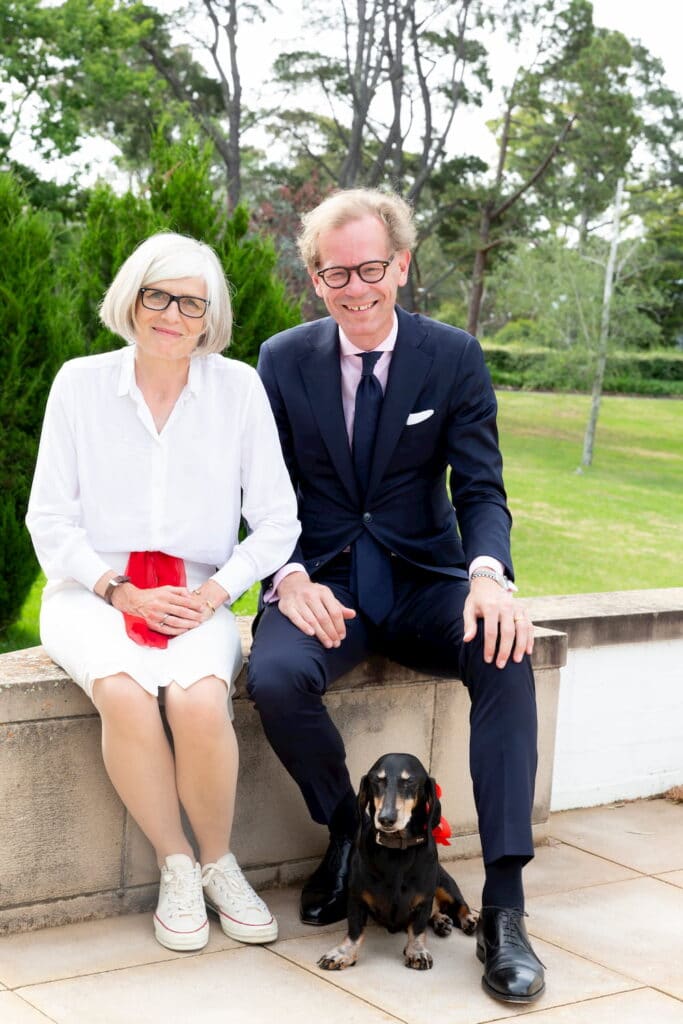Is there a country more synonymous with interior design than Sweden? A look inside the official residence of Sweden in Yarralumla speaks to the famous stylish simplicity, minimalism and functionality that defines Nordic design.
A conversation with Swedish Ambassador, His Excellency Henrik Cederin, delves into the philosophy behind the design and how it permeates many areas of Swedish life.
Mr Cederin said Sweden was just the third country to set up a consulate in Canberra.

The former Consul-General, Constans Lundquist, kick-started the diplomatic move from Sydney to the developing Canberra in 1947, by hiring his brother Edvard, a country architect from Västmanland, to draw the outline of the two-storey building.
Edvard created a long white building with copper roof and trademark Swedish blue accents, giving the building a true Scandinavian look.
He worked with a local builder to develop the 30,000 square metre site, but scarcity and industrial strikes of a post-World-War-II Australia meant a lack of manpower and delayed construction.
Edvard died before the building was completed in 1951; two years later it was recognised as the winner of the Sir John Sulman Award for Public and Monumental Buildings.
Mr Cederin said effort was taken to incorporate Swedish culture and art.
The grand entrance features a glass tetraptych depicting the long journey from Sweden to Australia, by well-known Swedish glass artist Sven Palmqvist.
Etched into the first panel are characters and scenes from Stockholm representing the Swedish story; the second and third panels illustrate the journey across the oceans; and the fourth panel is iconic Australia with kangaroos, Sydney Harbour Bridge, miners, agricultural workers and Indigenous Australians.

Inside the formal sitting room, surrounded by grid-pattern she-oak flooring, is a fireplace topped with marble shipped from Kolmården in Sweden’s south.
Antique furniture in the room includes a chest of drawers in a style inspired by late 18th century regent, King Gustav III.
A major renovation in 2014 replaced the innovative double-glazed glass from the 1940s with triple-glazed glass from the historic province of Småland for better energy efficiency.
As beautiful as the detail of this house is, it avoids overindulgence and remains in line with the Swedish concept of Largom.
A word without direct translation, Mr Cederin said Largom reflects the Swedish personality.

“We use it often and it means ‘just right’. It’s a good tradeoff between extremes and you find a middle-ground solution,” he said.
“It’s not too extravagant; not sticking out; it’s just enough; just right.”
The dining area fits up to 16 people and flows into a cosy library with a rarely used grand piano.
The dining table’s backdrop is a painting of the Stockholm courthouse that Mr Cederin recognises from his high school days in the area.
It’s a welcome reminder of home for the Ambassador, who joined Canberra’s diplomatic community from his previous post in Zambia, in the lonely year of 2020.
The large terrace, partly enclosed with glass, looks out onto a massive garden and tennis courts and is the perfect place for a Fika.
The Swedish social phenomenon Fika means much more than having a coffee. It can happen at any time and is a legitimate reason to set aside a moment and savour quality time with colleagues, family, friends, or someone you are trying to get to know.
Fika is a tradition observed frequently, preferably several times a day.
Perhaps it is traditions like this that contribute to Sweden’s consistent top-ten ranking in the happiest countries in the world.
Maybe it is their high-taxing high-service model of government, with free education and health care, which Mr Cederin said eases the stress and can happen because Swedish citizens trust their government.
“We are a strong welfare and egalitarian state,” he said.

“We have a strong labor movement going back 100 years, and a labor government until the 1970s, who were able to put in a lot of social reforms.
“Our tradition has always been that schooling is free.
“It’s important to have an educated population. It’s a question of rights, to be open for everyone to have a chance.
“The best brains are not always in the families with the biggest budgets.
“In our social contract, Swedes are willing to pay higher taxes, we know we get a lot out of it.”
Mr Cederin and his wife Alexandra enjoy walking their dog Max in the evenings in the laid-back streets of Canberra.
He said Australia and Sweden were friends with some cultural similarities.
“I was told about the Tall Poppy syndrome,” Mr Cederin said. “We have something similar, Jamtelagem – it means not to be too special, but hold back a bit.
“On the whole, we are like-minded and partners with strong cooperation in defence and building submarines and our United Nations political priorities are the same.”
However culturally similar the Aussies and the Swedes may be, we appear to have different methods for addressing the major issues of climate change and gender equality – both of which the Swedish government tackles with targets.
“On climate change Australia has chosen its own way, working on technology while the rest of us have set targets,” Mr Cederin said.
“It’s a slightly different approach.
“We all have a big meeting in Glasgow in a year’s time and we will see.”

Sweden was the first country in the world to introduce a “feminist foreign policy” in 2014 when the Social Democrats and Greens party formed government.
The feminist foreign policy is in the same vein as the Hawke-Keating Government’s Gender Responsive Budget, which has been adopted by every country in the OECD before being dropped by Australia in 2013.
“It was visionary, but for the rest of us, we had to learn, what does it mean?” Mr Cederin said.
“Six years later, we can see all the areas whereby focusing on that dimension, better outcomes can be achieved.
“Areas such as peace and security, often there is not a woman at the table. Including women will lead to better outcomes.
“When it comes to ambassadors, 48% of ours are women. We were down around 20% 20 years ago and then it was formulated we are going to have 50% and now we are almost there.
“With that mindset, a society will see the value in promoting in women and then it can happen, but you have to work on it with good method,” Mr Cederin said.
Photography by Kerrie Brewer
For more like this:



